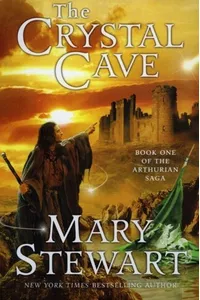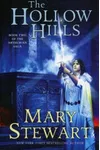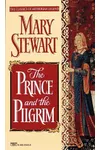Step into the enchanting world of Mary Stewart’s Arthurian Saga, where the legendary tales of King Arthur and Merlin are reimagined through a spellbinding blend of history, magic, and human emotion. This beloved fantasy series, narrated by a deeply human Merlin, invites readers to explore post-Roman Britain with vivid prose and timeless themes that continue to captivate fans of Arthurian lore.
Unlike traditional retellings filled with grandiose battles and overt sorcery, Stewart’s saga grounds the mythos in a richly detailed historical setting, making the magic feel organic and the characters relatable. Ready to journey through Camelot’s origins? Let’s dive into this literary gem!
How Arthurian Saga Began
Mary Stewart, already a celebrated author of romantic thrillers, turned her pen to Arthurian legend in the late 1960s, inspired by Geoffrey of Monmouth’s 'History of the Kings of Britain.' In her 50s, she sought to reframe the familiar myth from Merlin’s perspective, blending historical accuracy with subtle mysticism. The result was 'The Crystal Cave,' published in 1970, which launched the series and captivated readers with its fresh take on a sorcerer’s life.
Stewart’s meticulous research into post-Roman Britain and her love for evocative landscapes shaped the series’ immersive world. Her shift from thrillers to fantasy marked a bold pivot, earning her international acclaim and establishing the saga as a cornerstone of modern Arthurian literature.
The Heart of Arthurian Saga
The Arthurian Saga spans five novels, with the first three—'The Crystal Cave' (1970), 'The Hollow Hills' (1973), and 'The Last Enchantment' (1979)—forming the Merlin Trilogy. 'The Crystal Cave' follows young Merlin, a bastard son of a Welsh princess, as he discovers his prophetic gifts and aids Uther Pendragon in conceiving Arthur. 'The Hollow Hills' traces Merlin’s role in Arthur’s secretive upbringing and his rise to kingship, while 'The Last Enchantment' explores Arthur’s reign and Merlin’s waning powers. 'The Wicked Day' (1983) shifts focus to Mordred, Arthur’s doomed son, offering a sympathetic portrayal of the tragic figure. 'The Prince and the Pilgrim' (1995) rounds out the series with a lighter tale of quests and romance.
Stewart’s series weaves themes of destiny, loyalty, and the interplay of human will versus fate. Her Merlin is no flamboyant wizard but a scholar and seer, wielding subtle magic rooted in prophecy and intellect. The historical setting, vivid landscapes, and poetic prose create an immersive experience, while the focus on Merlin’s humanity—his doubts, loves, and sacrifices—adds emotional depth. Fans praise the series for balancing myth with realism, making Camelot feel both magical and tangible.
The saga’s slower pacing and descriptive style may not suit readers craving action-packed fantasy, but its rich character development and atmospheric world-building reward those who savor a thoughtful narrative. It’s a love letter to Arthurian legend, reimagining its heroes with nuance and grace.
Why Arthurian Saga Resonates
Mary Stewart’s Arthurian Saga redefined the genre by humanizing its iconic figures and grounding their stories in a believable historical context. Its influence is evident in later Arthurian works, like Marion Zimmer Bradley’s 'The Mists of Avalon,' which may have drawn inspiration from Stewart’s depiction of a Goddess cult at Avalon. The series’ empathetic portrayal of Mordred also set a precedent for nuanced villains in fantasy literature.
Decades after its debut, the saga remains a fan favorite, cherished for its lyrical prose and emotional resonance. Readers on platforms like Goodreads laud its evocative storytelling, with many calling it their definitive Arthurian experience. Its enduring appeal lies in its ability to make ancient legends feel intimate and relevant, inviting new generations to explore Camelot’s magic.
- Publication Years: 1970–1995
- Number of Books: 5
- Key Genre: Historical Fantasy
- Notable Recognition: International bestseller, praised by The New York Times
Grab 'The Crystal Cave' and dive into the Arthurian Saga’s spellbinding world of history and myth! Whether you’re a fantasy enthusiast or a lover of timeless tales, Merlin’s journey will leave you enchanted.




